I'm trying to understand how filter function works in R.I saw below code
x <- 1:100
filter(x, filter=.50,method="recursive")
And I got output as
[1] 1.00000 2.50000 4.25000 6.12500 8.06250 10.03125 12.01562 14.00781 16.00391
[10] 18.00195 20.00098 22.00049 24.00024 26.00012 28.00006 30.00003 32.00002 34.00001
[19] 36.00000 38.00000 40.00000 42.00000 44.00000 46.00000 48.00000 50.00000 52.00000
[28] 54.00000 56.00000 58.00000 60.00000 62.00000 64.00000 66.00000 68.00000 70.00000
[37] 72.00000 74.00000 76.00000 78.00000 80.00000 82.00000 84.00000 86.00000 88.00000
[46] 90.00000 92.00000 94.00000 96.00000 98.00000 100.00000 102.00000 104.00000 106.00000
[55] 108.00000 110.00000 112.00000 114.00000 116.00000 118.00000 120.00000 122.00000 124.00000
[64] 126.00000 128.00000 130.00000 132.00000 134.00000 136.00000 138.00000 140.00000 142.00000
[73] 144.00000 146.00000 148.00000 150.00000 152.00000 154.00000 156.00000 158.00000 160.00000
[82] 162.00000 164.00000 166.00000 168.00000 170.00000 172.00000 174.00000 176.00000 178.00000
[91] 180.00000 182.00000 184.00000 186.00000 188.00000 190.00000 192.00000 194.00000 196.00000
[100] 198.00000
I'm not getting how this output generated.Can you please help me understand?
